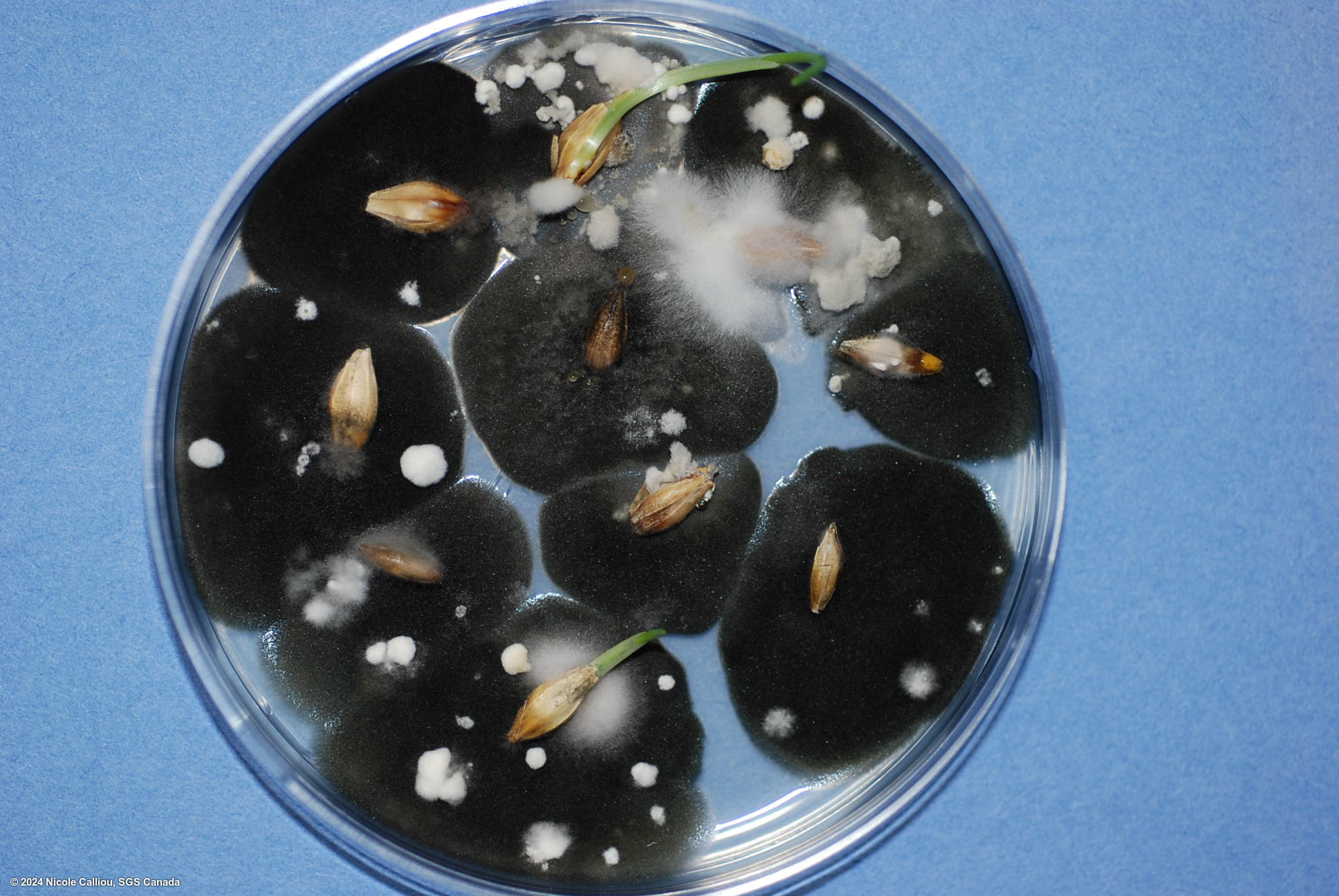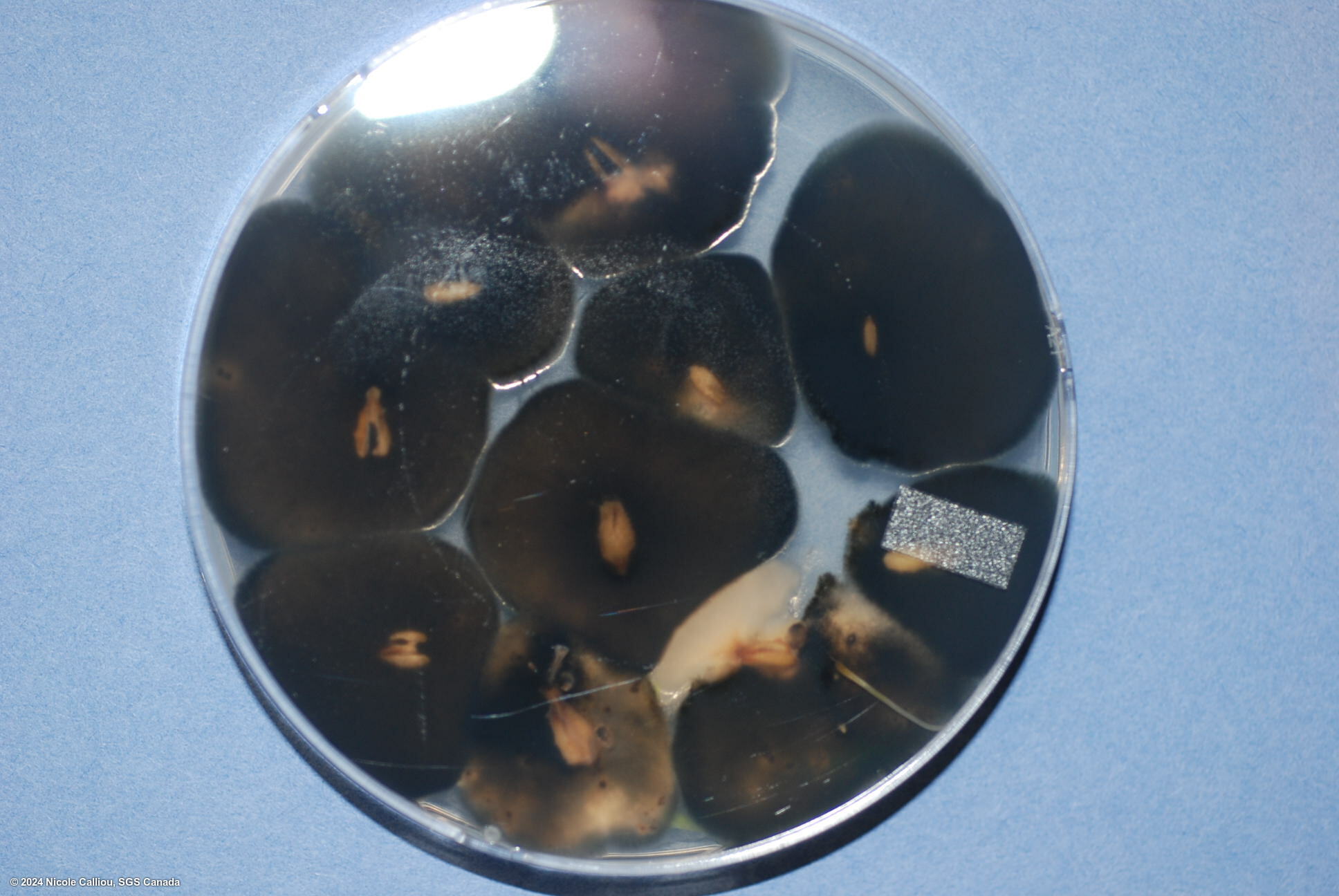Bipolaris sorokiniana
Overview
|
Scientific name
|
Bipolaris sorokiniana |
|
Genus
|
Bipolaris |
|
EPPO code
|
COCHSA |
|
Common name
|
Root rot |
|
Synonyms
|
Cochliobolus sativus |
Description
From ISTA's Common Laboratory Seed Health Testing Methods for Detecting Fungi:
Conidiophores of the fungus are brown, short, erect, in mose cases single, bearing 1-6 conidia acropleurogenously attanged at short distances in the upper half. Arrangement of shiny conidia on conidiophores is characteristic of the species and appears 'palm-tree like.'
Often the grown of the fungus covers the entire seed, and in a few cases the growth may extend to the blotter where conidia are produced in the same manner as on the seed.
Conidia ellipsoid, dark brown to black, smooth, mostly straight or slightly curved, wall thick but less so towards the ends, broadest at the middle, end rounded, scar clearly seed within the basal cell, 3-12 distoseptate (mostly 6-12), 40-120 μm long (mostly 60-100) x 17-28 μm wide (mostly 18-23).


